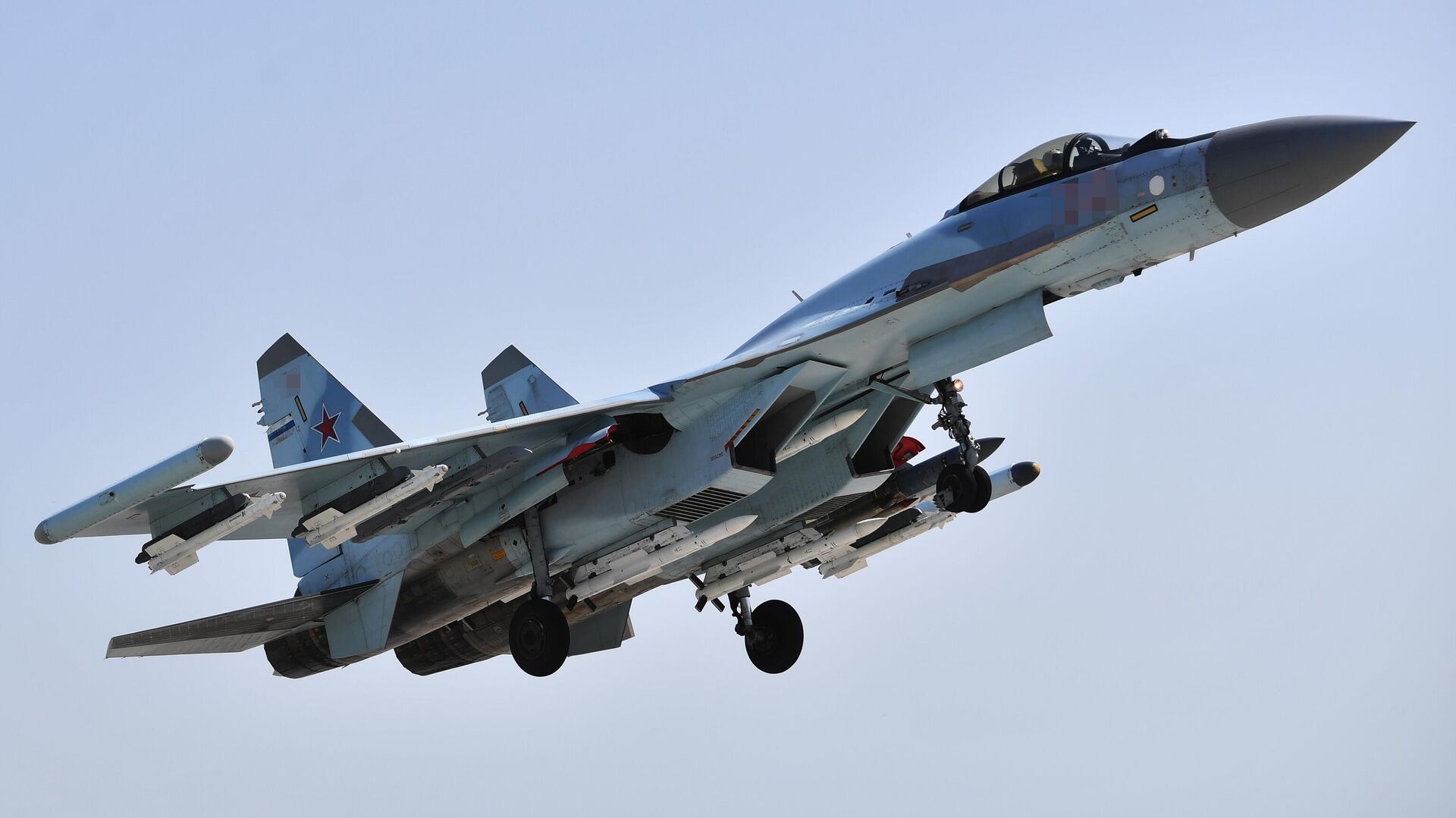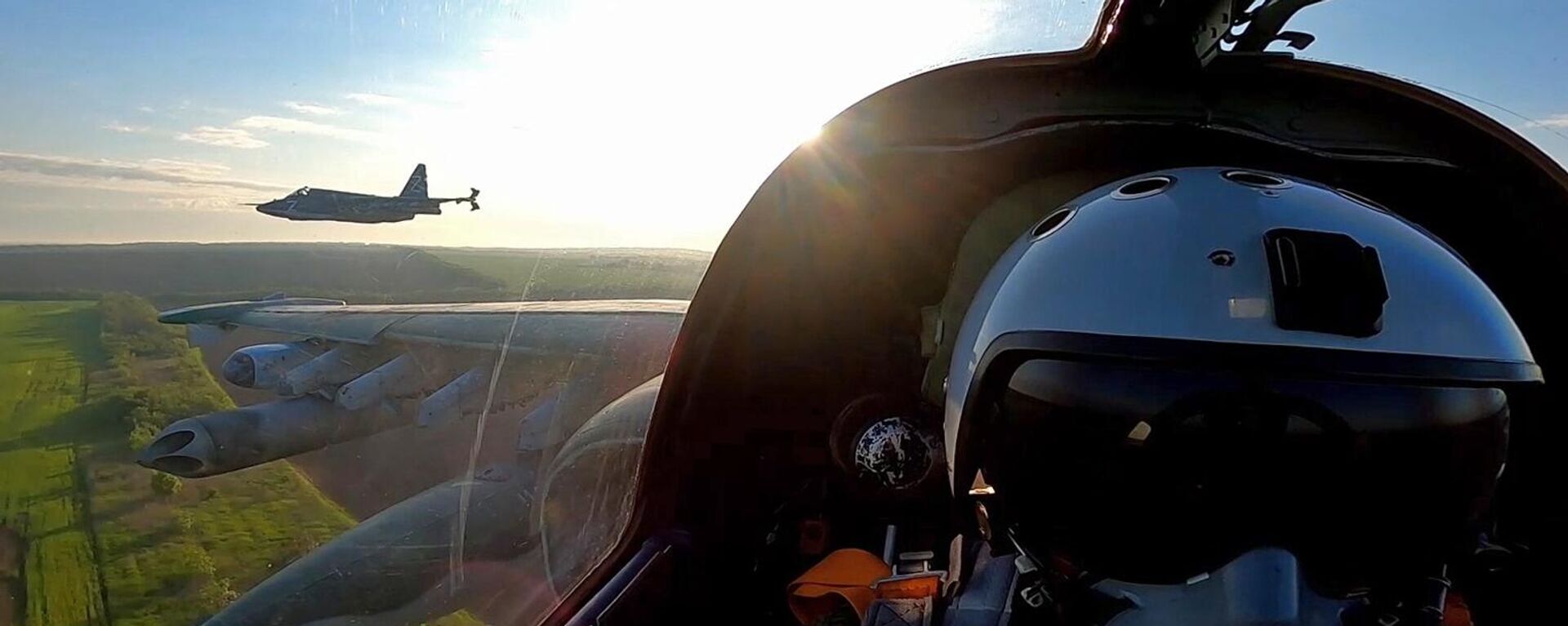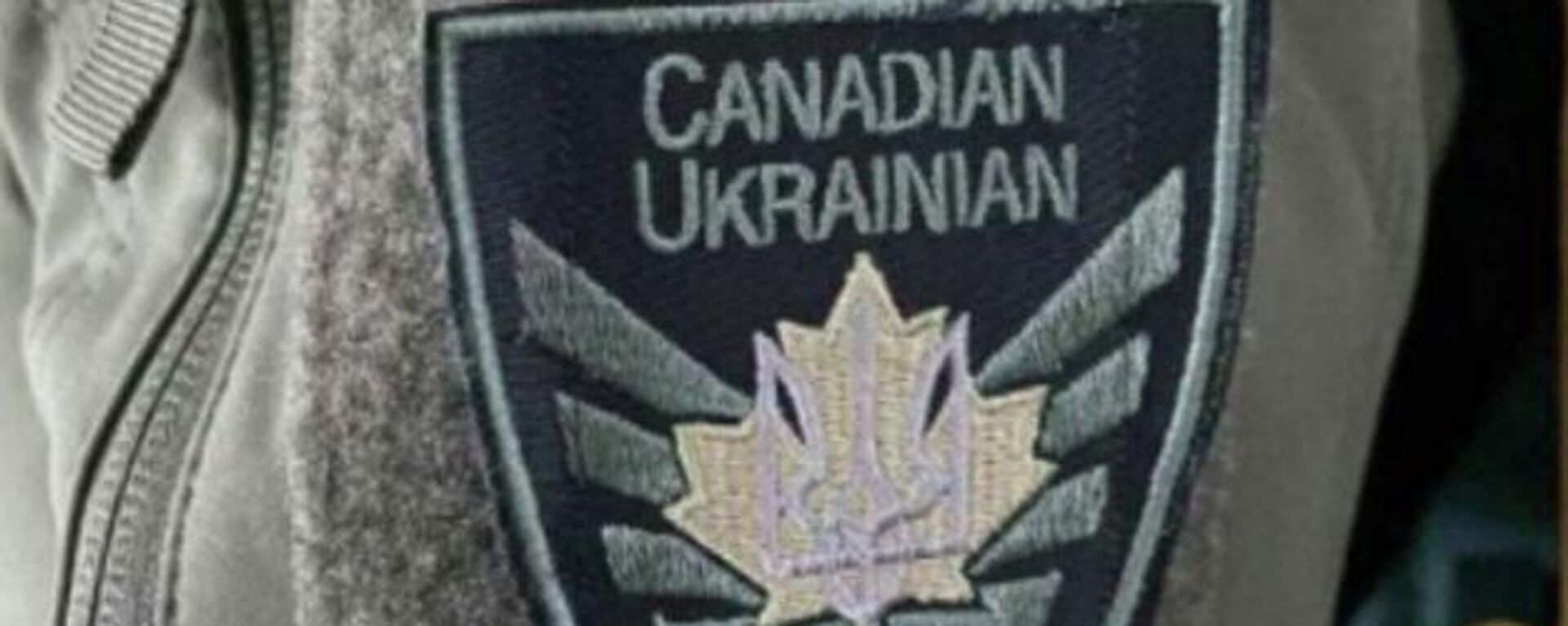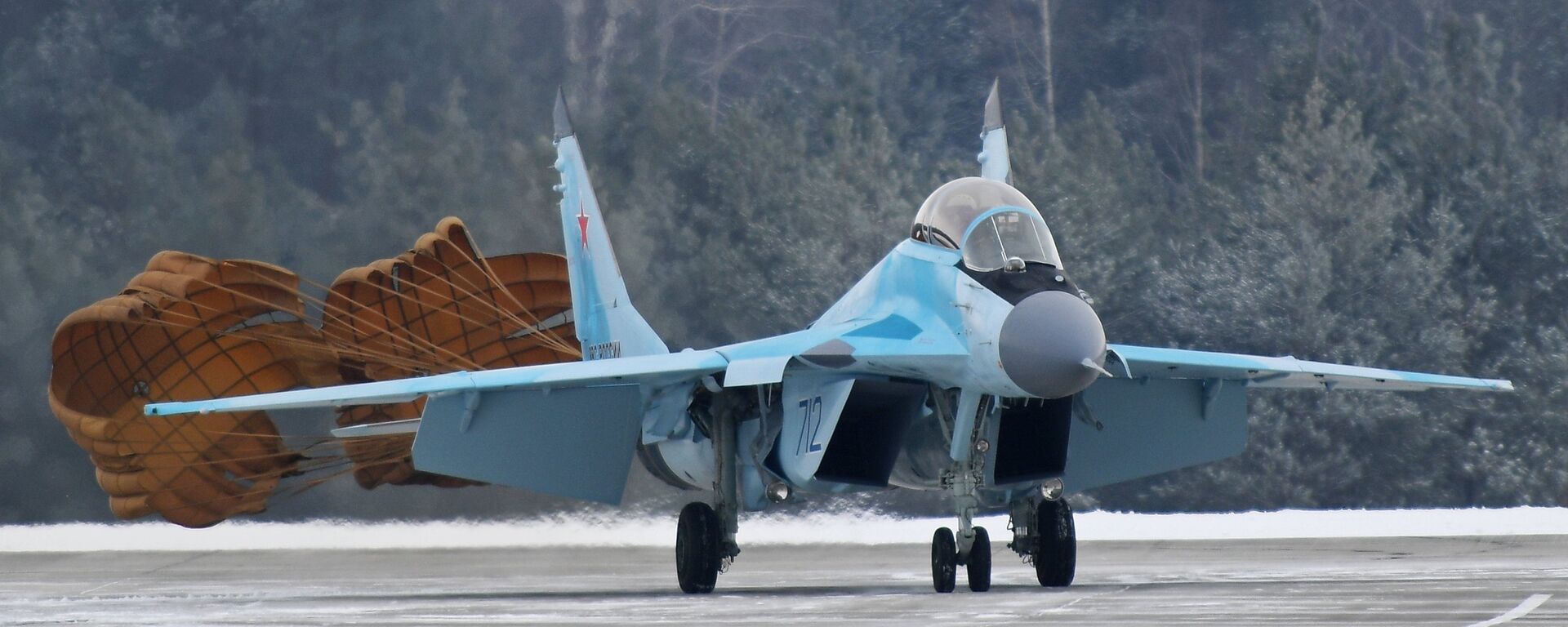https://sputnikglobe.com/20221212/nine-months-into-special-military-operation-are-dogfights-over-ukraine-making-russian-aces-1105394907.html
Nine Months Into Special Military Operation, Are Dogfights Over Ukraine Making Russian Aces?
Nine Months Into Special Military Operation, Are Dogfights Over Ukraine Making Russian Aces?
Sputnik International
Fighter aces — those who have shot down five or more enemy aircraft — have become increasingly scarce in the jet age, with none reaching that score since the... 12.12.2022, Sputnik International
2022-12-12T18:44+0000
2022-12-12T18:44+0000
2022-12-12T18:44+0000
sputnik explains
ukraine
russia
dogfight
aircraft
military operation
vietnam war
gulf war
korean war
https://cdn1.img.sputnikglobe.com/img/07e6/0c/0c/1105394640_0:160:3075:1889_1920x0_80_0_0_c01d0603ac285bf3fd8844c43274ea38.jpg
Russia’s military operation in Ukraine has become the biggest air battle in decades and may have given birth to a new generation of Russian air aces.As of December 12 2022, more than nine months into the special military operation, the Russian Defense Ministry (MoD) reports to have destroyed 526 Ukrainian military aircraft: 343 fixed-wing aeroplanes and 183 helicopters.The MoD’s daily reports contain details including date, aircraft type, location and means of destruction, allowing us to crunch the numbers.They tell us that, contrary to received wisdom, the era of the ace — exemplified by Manfred von Richthofen, the legendary ‘Red Baron’ from the age of strut and wire — is far from over. Despite the large numbers of air defence systems employed by both sides, well over 100 aircraft have been downed in air-to-air combat.The Russian Air Force does not name its pilots in statements and takes care to hide their identities in the many videos it releases. But it may be that there are already some Russian fighter aces, defined as achieving at least five aerial victories, during the military operation.The specific tallies include 262 fixed-wing and 121 rotary-wing aircraft. Of the 383 aircraft whose fate is described in detail in Russian MoD reports, more than a third of them (131) were shot down by Russian fighters.About 12 percent (45 aircraft) have destroyed on the ground and the remaining 54 percent (207) are accounted for by air defences and small arms fire. By most estimates, the Ukrainian Air Force (UAF) could have had no more than around 200 to 250 planes of all types before February 24, plus about 220 helicopters at most. But of the 140-odd claims not listed in detail, most are for sitting ducks knocked out in the first two weeks of the operation. They may possibly include non-airworthy machines parked at airfields as decoys.That ratio of fighter shoot-downs to other causes is far higher than in most other conflicts in the jet age, where either surface-to-air missiles (SAMs) and anti-aircraft artillery (AAA, commonly known as flak) have accounted for most losses or air forces have been wiped out in the first few hours in a wave of air strikes.For their part, the Ukrainian armed forces claim to have shot down 281 Russian jets and 264 helicopters as of December 7, 2022. Those figures would represent about a quarter of the Russian Air Force’s entire jet fighter fleet and a fifth of its helicopters, and likely exceed the total number of Russian aircraft committed to the operation — which are still flying missions daily.The famed Ghost of Kiev, a supposed Ukrainian fighter ace who shot down six Russian planes on the first day of the operation, turned out to be a propaganda phantom just like the US Navy’s invention of a fictional Vietnamese People’s Air Force (VPAF) ace dubbed ‘Colonel Toon’.Just two weeks into Russia's special military operation, a “senior US defense official” admitted that the UAF only had 56 jet fighters left, from an estimated initial strength of about 125, and were only about to send up five to ten of them a day. On September 19, US Air Force General James B. Hecker claimed that Ukrainian air defenses had shot down 55 Russian aircraft.Even if true, and assuming the UAF is achieving similar ratios of fighter victories to those by air defenses and on the ground as the Russian Air Force, that would put total Russian aircraft losses at no more than 100.All of Our Aircraft Are MissingThe question which goes unanswered is whether Russia is just over-claiming, or the UAF has managed to rustle up a lot more aircraft.Kiev inherited 507 military planes and 121 helicopters from the Soviet Union in 1991. Some of those were strategic bombers that Mikhail Gorbachev had foolishly left parked at Ukrainian airfields while talks on dissolving the USSR went on. They were later broken up under treaty agreements.In March 2014, acting Defense Minister Igor Tenyukh said only 15 percent of those were serviceable, while due to “poor training of crews, only 10 percent of them are capable of performing combat tasks.”Between 2007 and 2017, the country sold off 65 combat jets, 41 jet trainers, six transport and three tanker aircraft and 44 helicopters to raise cash.Since the start of the operation, the Pentagon claims to have supplied enough spare parts to get 20 mothballed Ukrainian planes flying again — likely MiG-29 fighters since it bought 21 of them from the former Soviet state of Moldova in 1997. Germany has also sent spare parts for MiG-29s and Mi-24 attack helicopters.Slovakia has pledged 11 MiG-29s to Ukraine, its entire jet fighter fleet, but has not yet handed over the aircraft.One Western defense writer claims the UAF is refurbishing up to 47 Su-24 strike jets that were previously up on blocks.There have been unconfirmed reports that Bulgaria, Georgia and North Macedonia have sent up to 18 Su-25s to Ukraine, dismantled and labelled as “parts.” That remains in the realm of speculation for now.Whatever the truth, the Russian forces have reported to have shot down at least 29 Su-27s and 114 Su-25s, almost twice as many of each type as even the most optimistic estimates gave the UAF before February.Comparable ConflictsThe heydays of the flying ace were the two world wars, when aviators fought with machine-guns and cannon at close range. Aerial battles have become far rarer the dawn of the supersonic age. Indeed, many air forces assumed that guided missiles would make dogfights a thing of the past, or even that SAMs made the fighter obsolete.The most recent major air campaign before Ukraine, the 1991 Gulf War, is already dwarfed by the battles in Ukraine.The US-led ‘coalition’ air forces claimed to have shot down 42 aircraft (36 fixed-wing and six helicopters) in air-to-air combat over Iraq, although the Iraqi air force only counted 23 aerial losses. The coalition destroyed 81 (63 aeroplanes and 13 helicopters) on the ground. That adds up to 123 aircraft destroyed, two-thirds of them before they even took off. 137 Iraqi aircraft were also flown to neighbouring Iran to escape destruction, where authorities impounded them.In return, the Western coalition lost 75 aircraft, 63 of those from the combined US armed forces. 52 of those were fixed-wing aircraft, of which 15 were claimed as “non-combat” losses, while of the 23 helicopters lost 18 were also listed as not due to enemy action.But the US has a history, dating back at least to the Vietnam War, of not crediting damaged aircraft that crashed on landing or were judged unrepairable as victories for the opposing side.The US claimed to have suffered no losses in aerial combat, but as many as four Iraqi pilots claimed victories — including Lieutenant Zuhair Dawoud, who shot down US Navy (USN) lieutenant Commander Scott Speicher’s F/A-18 Hornet in his Soviet-built MiG-25 interceptor on the first night of Operation Desert Storm.Two US Air Force (USAF) pilots, Captain Thomas Dietz and his wingman First Lieutenant Robert Hehemann, claimed three Iraqi aircraft each during the war and its immediate aftermath — although one of those was an undamaged turboprop trainer aircraft awarded to Hehemann when its pilot bailed out after seeing an Su-22 strike jet shot down by Dietz.One has to look back further to the original Gulf War, between Iraq and Iran from 1980 to 1988, to find the most recent air aces.In eight years of fighting, Iranian pilots claimed to have shot down 108 Iraqi aircraft, while Iraqis claimed 67 in return. Four Iranian pilots and one Iraqi claimed ace status.Reliable figures are hard to come by, but both sides likely took greater losses from SAMs and flak as the war ground on and the intensity of air-to-air battles waned. Some Western military analysts claim Iraq lost more than 500 aircraft.Guerrilla Air ForceBetween 1964 and 1973, the combined armed forces of the US Army, the USAF, the USN and the US Marine Corps lost more more than 9,000 aircraft in Vietnam. Of those, well over 5,000 were admitted to have been shot down in combat, including future senator John McCain's A-4 attack jet.According to US sources, about 60 percent of the aircraft lost in combat fell to anti-aircraft artillery (flak) and small arms fire, 30 percent to surface-to-air missiles and about two percent to fighter planes of the VPAF. The other eight percent were victims of 'friendly fire'.The US officially insists it achieved air superiority over Vietnam, claiming 210 aircraft were shot down by its fighters. But the tiny VPAF punched wayabove its weight, employing guerrilla tactics such as using helicopters to carry its fighters away from airfields after sorties so they would not be vulnerable to air strikes. By the war’s end it had claimed 266 aerial victories against the US.In fact, 16 of the 21 flying aces of the Vietnam War were pilots in the VPAF. The five USAF and USN aces include two two-man F-4 crews who were credited with aerial victories for shooting down the same aircraft. There were only two US ace pilots and three back-seat weapons operator aces.Red StarsRussia has been at the forefront of aviation since its infancy. Igor Sikorsky designed both the world’s first four-engined aeroplane, the ‘Russky Vityaz’, and the first true helicopter — both of which he piloted himself for their maiden flights.Pilots from Russia and other former Soviet states also earned more than their share of glory in the wars of the 20th century.The 20 highest-scoring Allied aces of the Second World War were all Soviet pilots — some of whom went on to down US planes in the Korean War — the last four of them equal with South African Pat Pattle on 41 victories and just ahead of Dick Bong from the US, who scored 40. Ivan Kozhedub, Grigory Rechkalov and Nikolai Gulaev are all credited with shooting down more than 60 aircraft.It is perhaps ironic that Kozhedub was born in the Ukraine, along with Dmitry Glinka and Amet-khan Sultan, the fifth and seventh most prolific Soviet aces — and that Glinka and Sultan scored most of their victories against the Nazi air forces in US-supplied Bell P-39 Airacobra fighter planes.Four of the top six Korean War aces were Soviet pilots, including the top two: Nikolai Sutyagin with 22 victories and Yevgeny Pepelyaev with 19. Kozhedub commanded the 324th Fighter Aviation Division of six squadrons in that war, which claimed 216 aerial victories in just 10 months for the loss of 27 MiG-15 jets and nine pilots.
https://sputnikglobe.com/20220530/watch-russian-su-25-planes-destroy-ukrainian-military-vehicles-and-strongholds-1095871352.html
https://sputnikglobe.com/20220705/twitter-celebrity-canadian-ukrainian-volunteer-deletes-account-after-being-exposed-as-fake-1096977328.html
https://sputnikglobe.com/20220710/live-updates-ukrainian-forces-target-dpr-settlements-with-grad-rockets-1097143511.html
https://sputnikglobe.com/20221203/russian-aerospace-forces-receive-new-batch-of-sukhoi-su-35s-fighter-aircraft-1105005983.html
https://sputnikglobe.com/20220815/russian-mig-31-chases-british-spy-plane-out-after-it-violates-russian-airspace-russian-mod-1099627221.html
https://sputnikglobe.com/20221209/uk-japan-and-italy-launch-project-to-develop-6th-generation-fighter-1105265755.html
ukraine
russia
Sputnik International
feedback@sputniknews.com
+74956456601
MIA „Rosiya Segodnya“
2022
James Tweedie
https://cdn1.img.sputnikglobe.com/img/07e4/08/1c/1080307270_0:3:397:400_100x100_80_0_0_7777393b9b18802f2e3c5eaa9cbcc612.png
James Tweedie
https://cdn1.img.sputnikglobe.com/img/07e4/08/1c/1080307270_0:3:397:400_100x100_80_0_0_7777393b9b18802f2e3c5eaa9cbcc612.png
News
en_EN
Sputnik International
feedback@sputniknews.com
+74956456601
MIA „Rosiya Segodnya“
Sputnik International
feedback@sputniknews.com
+74956456601
MIA „Rosiya Segodnya“
James Tweedie
https://cdn1.img.sputnikglobe.com/img/07e4/08/1c/1080307270_0:3:397:400_100x100_80_0_0_7777393b9b18802f2e3c5eaa9cbcc612.png
russia-ukraine crisis, russia's special military operation in ukraine, live updates on ukraine, vietnam war, korean war, gulf war, russia-ukraine dogfight, russian air forces destroy ukrainian aircraft
russia-ukraine crisis, russia's special military operation in ukraine, live updates on ukraine, vietnam war, korean war, gulf war, russia-ukraine dogfight, russian air forces destroy ukrainian aircraft
Russia’s military operation in
Ukraine has become the biggest air battle in decades and may have given birth to a new generation of Russian air aces.
As of December 12 2022, more than nine months into the special military operation, the Russian Defense Ministry (MoD) reports to have destroyed 526 Ukrainian military aircraft: 343 fixed-wing aeroplanes and 183 helicopters.
The MoD’s daily reports contain details including date, aircraft type, location and means of destruction, allowing us to crunch the numbers.
They tell us that, contrary to received wisdom, the era of the ace — exemplified by Manfred von Richthofen, the legendary ‘Red Baron’ from the age of strut and wire — is far from over. Despite the large numbers of air defence systems employed by both sides, well over 100 aircraft have been downed in air-to-air combat.
The Russian Air Force does not name its pilots in statements and takes care to hide their identities in the many videos it releases. But it may be that there are already some Russian fighter aces, defined as achieving at least five aerial victories, during the military operation.
The specific tallies include 262 fixed-wing and 121 rotary-wing aircraft. Of the 383 aircraft whose fate is described in detail in Russian MoD reports, more than a third of them (131) were shot down by Russian fighters.
About 12 percent (45 aircraft) have destroyed on the ground and the remaining 54 percent (207) are accounted for by air defences and small arms fire.
By most estimates, the Ukrainian Air Force (UAF) could have had no more than around 200 to 250 planes of all types before February 24, plus about 220 helicopters at most. But of the 140-odd claims not listed in detail, most are for sitting ducks knocked out in the first two weeks of the operation. They may possibly include non-airworthy machines parked at airfields as decoys.
That ratio of fighter shoot-downs to other causes is far higher than in most other conflicts in the jet age, where either surface-to-air missiles (SAMs) and anti-aircraft artillery (AAA, commonly known as flak) have accounted for most losses or air forces have been wiped out in the first few hours in a wave of air strikes.
For their part, the Ukrainian armed forces
claim to have shot down 281 Russian jets and 264 helicopters as of December 7, 2022. Those figures would represent about a quarter of the Russian Air Force’s entire jet fighter fleet and a fifth of its helicopters, and likely exceed the total number of Russian aircraft committed to the operation — which are still flying missions daily.
The famed Ghost of Kiev, a supposed Ukrainian fighter ace who shot down six Russian planes on the first day of the operation, turned out to be a propaganda phantom just like the US Navy’s invention of a fictional Vietnamese People’s Air Force (VPAF) ace dubbed ‘Colonel Toon’.
Just two weeks into Russia's special military operation, a “senior US defense official” admitted that the UAF only had
56 jet fighters left, from an estimated initial strength of about 125, and were only about to send up five to ten of them a day. On September 19, US Air Force General James B. Hecker claimed that Ukrainian air defenses had shot down
55 Russian aircraft.
Even if true, and assuming the UAF is achieving similar ratios of fighter victories to those by air defenses and on the ground as the Russian Air Force, that would put total Russian aircraft losses at no more than 100.
All of Our Aircraft Are Missing
The question which goes unanswered is whether Russia is just over-claiming, or the UAF has managed to rustle up a lot more aircraft.
Kiev inherited 507 military planes and 121 helicopters from the Soviet Union in 1991. Some of those were strategic bombers that Mikhail Gorbachev had foolishly left parked at Ukrainian airfields while talks on dissolving the USSR went on. They were later broken up under treaty agreements.
In March 2014, acting Defense Minister Igor Tenyukh said only
15 percent of those were serviceable, while due to “poor training of crews, only 10 percent of them are capable of performing combat tasks.”
Between 2007 and 2017, the country sold off 65 combat jets, 41 jet trainers, six transport and three tanker aircraft and 44 helicopters to raise cash.
Since the start of the operation, the Pentagon claims to have supplied enough spare parts to get 20 mothballed Ukrainian planes flying again — likely MiG-29 fighters since it
bought 21 of them from the former Soviet state of Moldova in 1997. Germany has also sent spare parts for MiG-29s and Mi-24 attack helicopters.
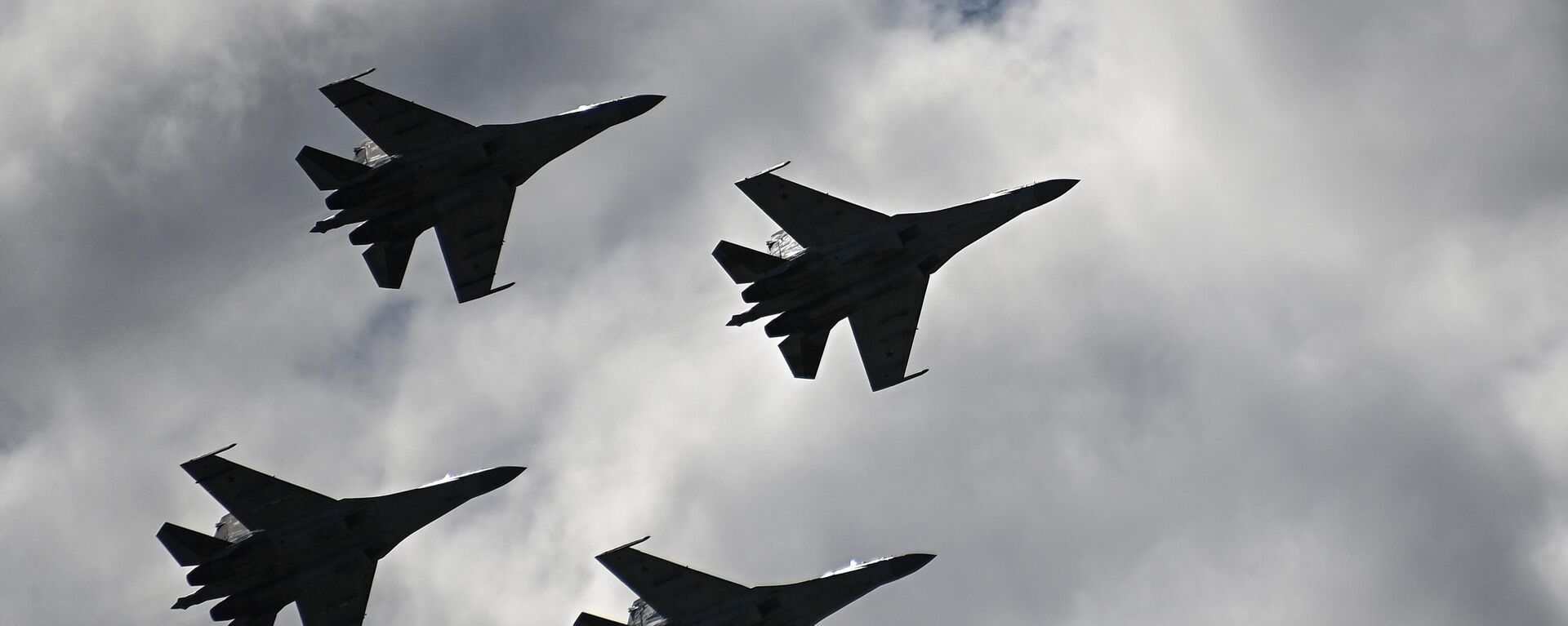
3 December 2022, 11:44 GMT
Slovakia has pledged 11 MiG-29s to Ukraine, its entire jet fighter fleet, but has not yet handed over the aircraft.
One Western
defense writer claims the UAF is refurbishing up to 47 Su-24 strike jets that were previously up on blocks.
There have been unconfirmed reports that Bulgaria, Georgia and North Macedonia have sent up to 18 Su-25s to Ukraine, dismantled and labelled as “parts.” That remains in the realm of speculation for now.
Whatever the truth, the Russian forces have reported to have shot down at least 29 Su-27s and 114 Su-25s, almost twice as many of each type as even the most optimistic estimates gave the UAF before February.
The heydays of the flying ace were the two world wars, when aviators fought with machine-guns and cannon at close range. Aerial battles have become far rarer the dawn of the supersonic age. Indeed, many air forces assumed that guided missiles would make dogfights a thing of the past, or even that SAMs made the fighter obsolete.
The most recent major air campaign before Ukraine, the 1991
Gulf War, is already dwarfed by the battles in Ukraine.
The US-led ‘coalition’ air forces claimed to have shot down 42 aircraft (36 fixed-wing and six helicopters) in air-to-air combat over Iraq, although the Iraqi air force only counted 23 aerial losses. The coalition destroyed 81 (63 aeroplanes and 13 helicopters) on the ground. That adds up to
123 aircraft destroyed, two-thirds of them before they even took off. 137 Iraqi aircraft were also flown to neighbouring Iran to escape destruction, where authorities impounded them.
In return, the Western coalition lost 75 aircraft, 63 of those from the combined US armed forces. 52 of those were fixed-wing aircraft, of which 15 were claimed as “non-combat” losses, while of the 23 helicopters lost 18 were also listed as not due to enemy action.
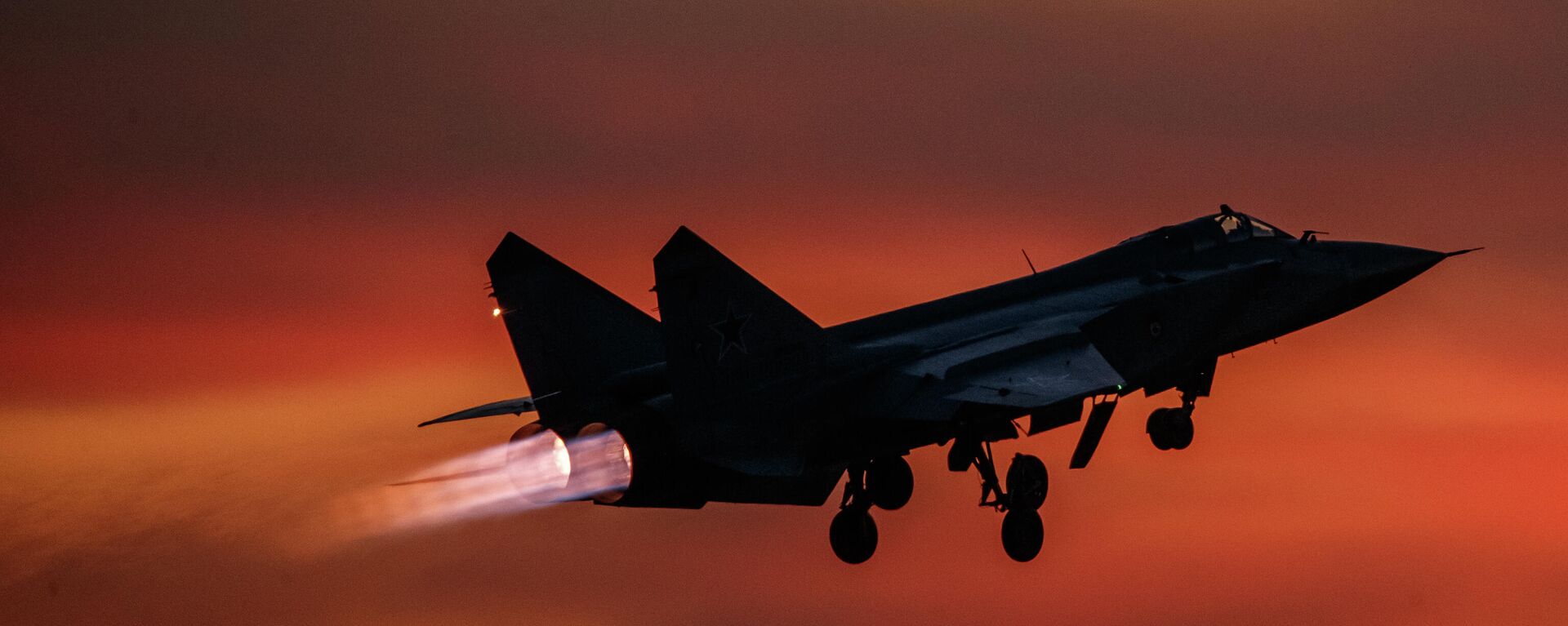
15 August 2022, 18:14 GMT
But the US has a history, dating back at least to the Vietnam War, of not crediting damaged aircraft that crashed on landing or were judged unrepairable as victories for the opposing side.
The US claimed to have suffered no losses in aerial combat, but as many as four Iraqi pilots
claimed victories — including Lieutenant
Zuhair Dawoud, who shot down US Navy (USN) lieutenant Commander Scott Speicher’s F/A-18 Hornet in his Soviet-built MiG-25 interceptor on the first night of Operation Desert Storm.
Two US Air Force (USAF) pilots, Captain Thomas Dietz and his wingman First Lieutenant Robert Hehemann, claimed three Iraqi aircraft each during the war and its immediate aftermath — although one of those was an undamaged turboprop trainer aircraft awarded to Hehemann when its pilot bailed out after seeing an Su-22 strike jet shot down by Dietz.
One has to look back further to the original Gulf War, between
Iraq and Iran from 1980 to 1988, to find the most recent air aces.
In eight years of fighting,
Iranian pilots claimed to have shot down 108 Iraqi aircraft, while
Iraqis claimed 67 in return. Four Iranian pilots and one Iraqi claimed ace status.
Reliable figures are hard to come by, but both sides likely took greater losses from SAMs and flak as the war ground on and the intensity of air-to-air battles waned. Some Western military analysts claim Iraq lost more than 500 aircraft.
Between 1964 and 1973, the combined armed forces of the US Army, the USAF, the USN and the US Marine Corps lost more more than 9,000 aircraft in Vietnam. Of those, well over 5,000 were admitted to have been shot down in combat, including future senator
John McCain's A-4 attack jet.
According to US sources, about 60 percent of the aircraft lost in combat fell to anti-aircraft artillery (flak) and small arms fire, 30 percent to surface-to-air missiles and about two percent to fighter planes of the VPAF. The other eight percent were victims of 'friendly fire'.
The US officially insists it achieved air superiority over Vietnam, claiming 210 aircraft were shot down by its fighters. But the tiny VPAF punched wayabove its weight, employing guerrilla tactics such as using helicopters to carry its fighters away from airfields after sorties so they would not be vulnerable to air strikes. By the war’s end it had claimed 266 aerial victories against the US.
In fact, 16 of the 21 flying aces of the Vietnam War were pilots in the VPAF. The five USAF and USN aces include two two-man F-4 crews who were credited with aerial victories for shooting down the same aircraft. There were only two US ace pilots and three back-seat weapons operator aces.

9 December 2022, 08:12 GMT
Russia has been at the forefront of aviation since its infancy. Igor Sikorsky designed both the world’s first four-engined aeroplane, the ‘Russky Vityaz’, and the first true helicopter — both of which he piloted himself for their maiden flights.
Pilots from Russia and other former Soviet states also earned more than their share of glory in the wars of the 20th century.
The 20 highest-scoring Allied aces of the Second World War were all Soviet pilots — some of whom went on to down US planes in the
Korean War — the last four of them equal with South African Pat Pattle on 41 victories and just ahead of Dick Bong from the US, who scored 40. Ivan Kozhedub, Grigory Rechkalov and Nikolai Gulaev are all credited with shooting down more than 60 aircraft.
It is perhaps ironic that Kozhedub was born in the Ukraine, along with Dmitry Glinka and Amet-khan Sultan, the fifth and seventh most prolific Soviet aces — and that Glinka and Sultan scored most of their victories against the Nazi air forces in US-supplied Bell P-39 Airacobra fighter planes.
Four of the top six Korean War aces were Soviet pilots, including the top two: Nikolai Sutyagin with 22 victories and Yevgeny Pepelyaev with 19. Kozhedub commanded the 324th Fighter Aviation Division of six squadrons in that war, which claimed 216 aerial victories in just 10 months for the loss of 27 MiG-15 jets and nine pilots.
